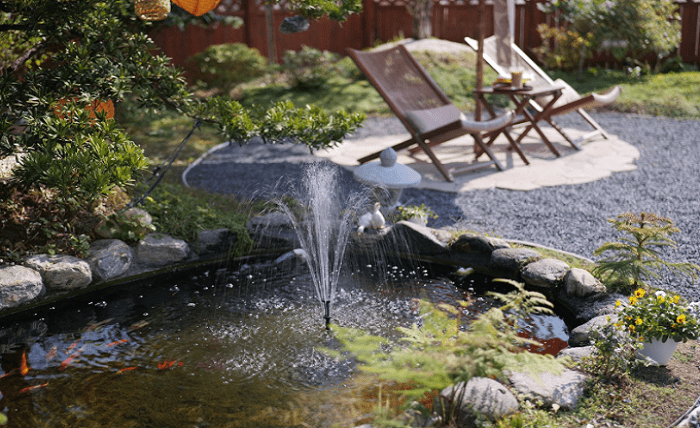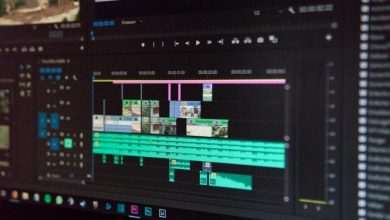
A backyard pond does more than add curb appeal; it becomes a living focal point that invites reflection, wildlife, and the soothing sound of moving water.
Whether you dream of koi gliding beneath lily pads or a miniature wetland buzzing with dragonflies, building your pond is an achievable weekend project when you break it into clear, manageable steps.
Define Your Vision and Purpose
Before you pick up a shovel, clarify why you want a pond:
- Ornamental display: Showcase aquatic plants, steppingstones, or a dramatic cascade.
- Wildlife habitat: Provide a drinking and breeding site for birds, frogs, and beneficial insects.
- Fish‐keeping: House ornamental goldfish or koi that require specific depths and stable water quality.
Once your main goal is clear, decisions about size, depth, and equipment become much easier. Sketch a rough layout and jot down must‑have features such as marginal planting shelves, a stream channel, or an integrated deck , then verify that everything fits comfortably within your yard’s dimensions.
Choose the Optimal Location
Pond placement can make or break a project. Walk your property at different times of day and note sun patterns, prevailing winds, and proximity to large trees. Aim for:
- Six hours of sunlight for hardy water lilies, but partial afternoon shade to curb algae in hot climates.
- Level ground to reduce excavation labor.
- Good visibility from patios, windows, or paths so you can admire your handiwork year‑round.
- Safe distance from runoff avoids low spots where fertilizers could wash in.
- Ready access to electricity and a water spigot to power equipment and top up evaporation losses.
Gather Tools and Materials
Essential equipment
- Heavy‑duty spade, trenching shovel, and digging fork
- Wheelbarrow and garden rake
- Rubber mallet and long‑handled tamper
- Flexible PVC tubing (rated for direct burial)
- Flexible EPDM liner or pre‑formed shell
- Underlayment fabric to cushion rocks and roots
- Flat, rounded-edged stones or coping flagstones
- Pond safe silicone sealant and bulkhead fittings
Having every item staged near the site prevents mid‑project supply runs.
Mark and Excavate the Pond Outline
- Stake the perimeter using rope and landscape marking paint. Step back and adjust curves until they look appealing from key viewing angles.
- Remove the sod within the outline and set it aside for later use as compost.
- Dig in tiers. Start with the shallow planting ledge, then carve out the deeper basin. Slope walls at a gentle 20–30‑degree angle to avoid cave‑ins.
- Check levels frequently with a long board and spirit level placed across multiple points; the top edge must be perfectly level so water meets the coping evenly.
- Create a shelf for equipment housings such as external skimmers or waterfall boxes if your design includes them.
Work in the morning or late afternoon when the soil is cooler and less sticky.
Install Underlayment and Pond Liner
Spread a layer of contractor’s sand or old carpet padding to cushion the liner from roots and stones. Roll out the EPDM sheet, leaving at least 12–16 inches of extra material hanging over the rim.
Gently press the liner into corners without stretching. Fill the pond one‑third with a hose, smoothing folds as the weight of water settles everything into place.
Edge Treatment for a Natural Finish
Hide the liner by folding the excess behind the coping stones:
- Lay flat rocks or flagstones halfway over the pond’s edge, using smaller “chinking” stones beneath for support.
- Backfill soil behind the rock border, tamping lightly to lock everything in.
- Add creeping ground covers such as thyme or ajuga between stones to soften hard lines.
The result looks as though the water body has always been part of the landscape.
Plumbing and Circulation Essentials
Healthy ponds need constant movement to oxygenate water, distribute heat, and prevent stagnation. Run flexible PVC pipe from the hidden pump chamber to any fountain heads, spitters, or cascades before backfilling trenches.
When selecting pumps for ponds and waterfalls, aim for a flow rate that turns over the entire volume once every hour for goldfish ponds, or every 45 minutes for koi systems. (1st use)
Add a ball valve on the discharge line so you can fine‑tune velocity and create gentle ripples or dramatic sheets of water on demand.
Filtration and Water Quality Management
Crystal‑clear water relies on biological and mechanical filtration. An external skimmer traps leaves before they sink, while a pressurized canister or bog filter houses beneficial bacteria that convert toxic ammonia into safer nitrates. A well‑sized filtration system for a pond keeps maintenance low and reduces chemical interventions. (1st use)
Position your filter where it’s easy to access for routine flushes, usually at the head of a waterfall or beside the pump vault.
Initial Filling and Water Chemistry
Fill the pond slowly to full depth, checking the liner’s edge remains covered. Add a de‑chlorinator if your municipal supply contains chlorine or chloramines. Test kits should show:
- pH 6.8–8.2 (most fish tolerate this range)
- Ammonia and nitrite at 0 ppm
- Nitrate under 40 ppm for plant‑heavy setups
Cycle the system for two to three weeks before introducing fish to allow beneficial bacteria colonies to mature.
Introducing Fish and Beneficial Wildlife
Begin with hardy goldfish varieties such as shubunkins or sarasas. Acclimate them by floating their bag in the pond for 15 minutes, then gradually mixing pond water into the bag over another 20 minutes. Feed sparingly; overfeeding fouls water faster than most beginners expect.
Native frogs, toads, and dragonflies will arrive on their own once you provide shallow “beach” access and emergent plants. These predators help keep mosquito larvae in check.
Electrical Safety and Lighting
- GFCI outlets are mandatory for all outdoor pumps and lighting.
- Low‑voltage LED fixtures along pathways enhance evening ambience without spiking the power bill.
- Bury cables inside PVC conduit at least 18 inches deep and label clearly before covering to prevent future mishaps.
Seasonal Care Calendar
Spring
- Remove netting, trim dead foliage, restart pumps, and divide overcrowded lilies.
Summer
- Top up evaporation losses, prune floating plants to maintain 60‑70 % surface cover, and monitor dissolved oxygen during heatwaves.
Autumn
- Skim fallen leaves daily, install netting, and feed fish a wheat‑germ diet to ease digestion.
- Replace UV bulbs for peak algae control next season.
Winter
- Use a floating de‑icer or air stone to keep a hole in the ice for gas exchange.
- Shut down waterfalls if severe freezing threatens plumbing.
A properly sized filtration system for a pond requires minimal intervention beyond rinsing pads and back‑flushing bio‑media on a monthly schedule. (2nd use)
Eco‑Friendly Tips for a Sustainable Pond
- Use rain barrels to harvest roof runoff for top‑ups.
- Opt for solar accent lighting and motion‑activated pumps to lower your carbon footprint.
- Plant native vegetation around the pond perimeter to support pollinators.
- Compost pruned aquatic foliage rather than discarding it in green waste.
Enhancements and Future Upgrades
Once the basics run smoothly, consider:
- Waterfalls and rills empty into the main basin; high‑head pumps for ponds and waterfalls can be hidden behind rocks for a natural look. (2nd use)
- Smart controllers that monitor water level and temperature via Wi‑Fi.
- Underwater LED color changers for dramatic nighttime displays.
- Automatic fish feeders to maintain consistent portions while you travel.
To bring it all together
Constructing a garden pond combines engineering with artistry, transforming raw earth, stone, and water into a dynamic ecosystem that you’ll engage with daily.
By planning layout meticulously, investing in reliable equipment, and committing to routine but not overwhelming maintenance, you’ll create a backyard sanctuary that refreshes the senses, supports local wildlife, and boosts property value.
Grab that shovel, gather your materials, and transform the blank corner of your yard into a sparkling oasis that will delight family and friends for decades to come.



